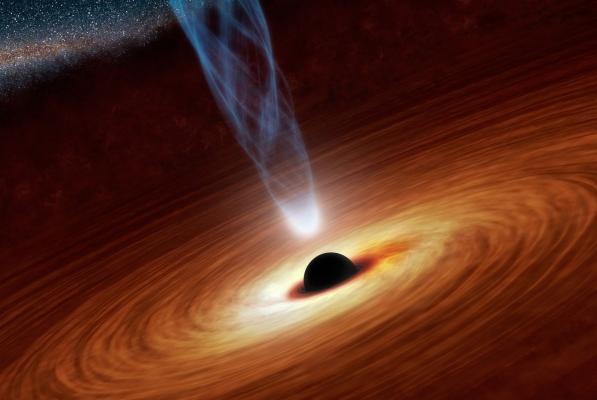Aug. 9 (UPI) — A theoretical survey of the population of black holes in our galaxy suggests there are tens of millions of black holes in the Milky Way — many more than astronomers expected to find. The findings suggest the universe is full of black holes.
“We think we’ve shown that there are as many as 100 million black holes in our galaxy,” James Bullock, professor of physics and astronomy at the University of California, Irvine, said in a news release.
Many astronomers were surprised when the Laser Interferometer Gravitational-Wave Observatory, or LIGO, detected gravitational wavesgenerated by the collision of two black holes, each 30 times more massive than the sun. Studies suggest the majority of stellar remnant black holes boast a mass similar to our sun.
The collision suggested an unexpected abundance of not just black holes, but exceptionally large black holes.
Astronomers at UCI investigated the unlikely phenomenon by estimating the population of black holes in the Milky Way. Because scientists have a solid understanding of the different sized stars found in the Milky Way, they were able to estimate how many aging stars have died and formed black holes.
“Based on what we know about star formation in galaxies of different types, we can infer when and how many black holes formed in each galaxy,” said Oliver Elbert, a graduate student in physics and astronomy. “Big galaxies are home to older stars, and they host older black holes too.”
The Milky Way is a rather large galaxy with lots of metal-rich stars, like our sun. These stars tend to shed more mass over their lifetimes, so when they die, they form smaller black holes.
Smaller dwarf galaxies feature a higher percentage of metal-poor stars. These massive stars don’t shed much mass during their lifetime, yielding more massive supernovas and black holes when they finally collapse in on themselves.
“We have a pretty good understanding of the overall population of stars in the universe and their mass distribution as they’re born, so we can tell how many black holes should have formed with 100 solar masses versus 10 solar masses,” Bullock said. “We were able to work out how many big black holes should exist, and it ended up being in the millions — many more than I anticipated.”
Researchers found that even if only a tiny percentage of massive black holes end up merging, their numbers can account for the type of collision detected by LIGO.
The astronomers findings — detailed this week in the Monthly Notices of the Royal Astronomical Society — suggest more massive black hole mergers will be detected in the years ahead.
“If the current ideas about stellar evolution are right, then our calculations indicate that mergers of even 50-solar-mass black holes will be detected in a few years,” said UCI astronomy professor Manoj Kaplinghat.






